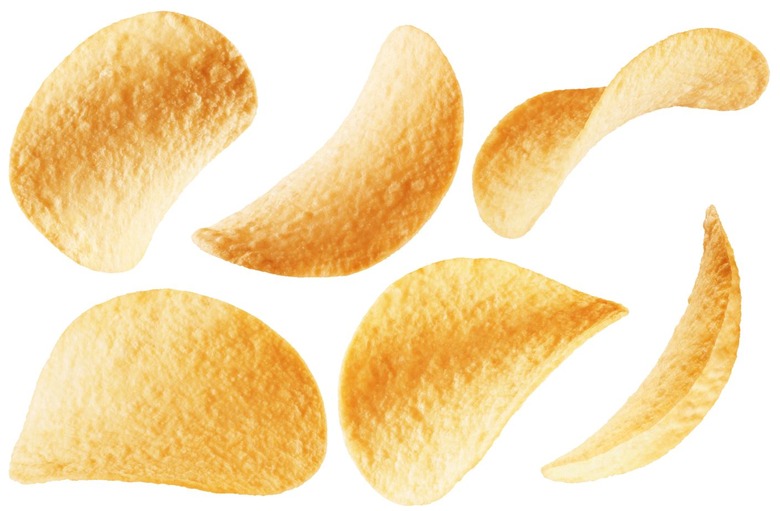Pringles Are Hyperbolic Paraboloids
In 1956, food scientists at Procter & Gamble set out on a mission. They'd spent years hearing complaints about their potato chips being greasy, broken, and stale, and they wanted to create the perfect potato chip: one that was crisp and crunchy, not greasy, and didn't crumble in the bag. They tasked a chemist by the name of Fredric Baur with not only creating that perfect chip, but also designing the vessel to go with them. After years of trial and error, Baur succeeded on both fronts.
The World's Wildest Potato Chip Flavors
Aided by the processing power of early supercomputers, Baur and his team settled on the chip shape we know and love today, which is actually called a truncated hyperbolic paraboloid, meaning that the lines on its doubly ruled surface are parallel to a common plane, but not to each other (geometry!). It's actually a fairly common roof style in modern architecture, because it can be constructed with straight sections of steel, lumber, or other building materials yet still appear curved.
The reason the team settled on this chip shape is because it allows the chips to be easily stacked and kept in place during packaging. As for the container, Baur's team invented that as well, but it didn't require nearly the same amount of brainpower: It's just a cylinder. Baur was so proud if his invention that when he passed away in 2008, some of his ashes were buried in a Pringles can, at his request.
Even though Baur was able to perfect the chip and can design, there was one crucial aspect that he just couldn't get right: the chip's flavor. The chips were put on the back burner until the mid-1960s, when another food scientist by the name of Alexander Liepa finally perfected it; a mechanical engineer (who also moonlighted as a science fiction writer) named Gene Wolfe developed the machine to mass-produce them, and they finally hit the market in 1967, becoming one of the most popular snack foods of all time.
